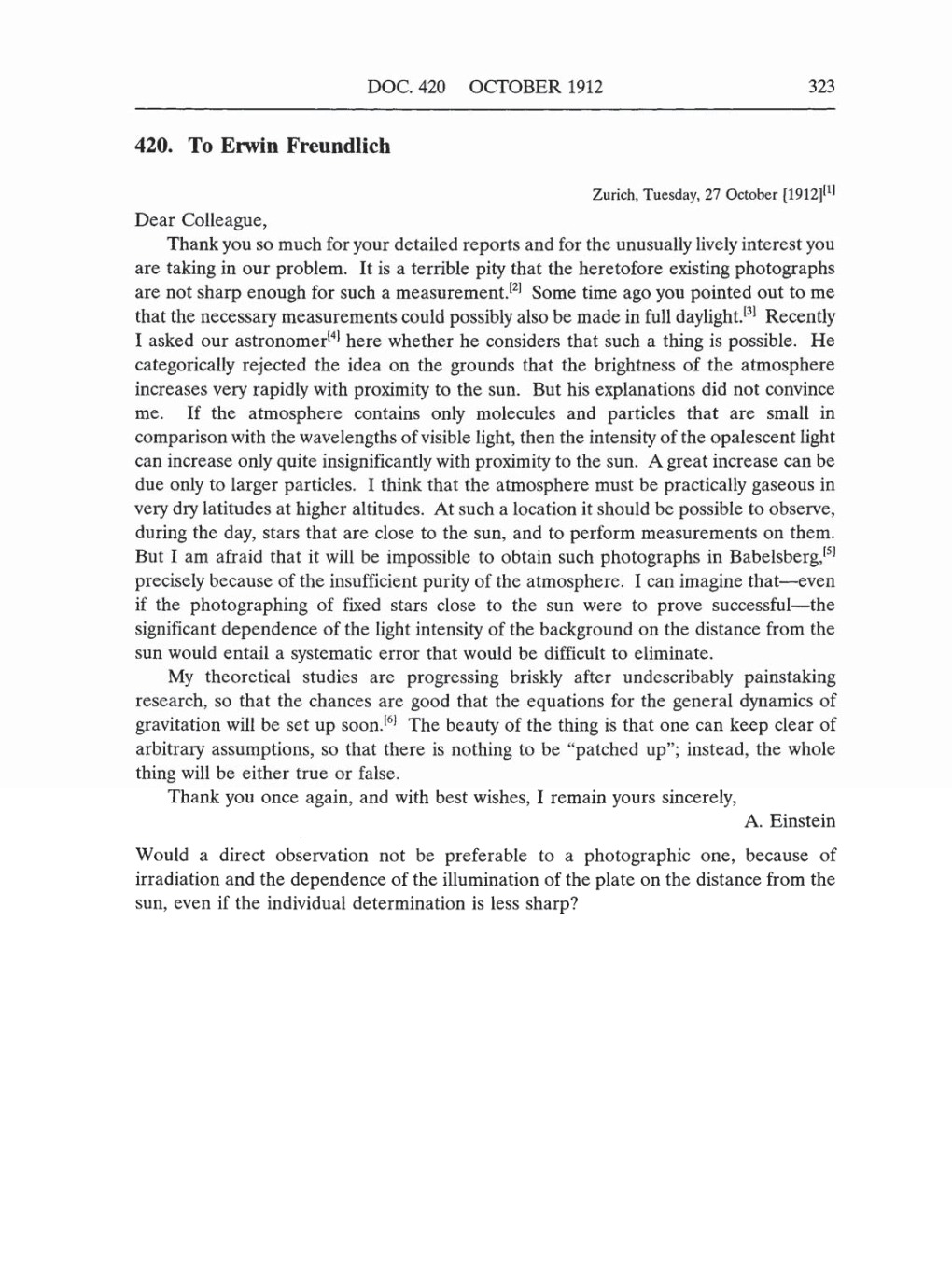DOC.
420
OCTOBER
1912 323
420. To
Erwin Freundlich
Zurich,
Tuesday,
27
October
[1912][1]
Dear
Colleague,
Thank
you so
much
for
your
detailed
reports
and for the
unusually lively
interest
you
are
taking
in
our
problem.
It
is
a
terrible
pity
that
the
heretofore
existing
photographs
are
not
sharp enough
for
such
a
measurement.[2] Some time
ago you
pointed
out to
me
that
the
necessary
measurements could
possibly
also be
made
in full
daylight.[3]
Recently
I asked
our
astronomer[4]
here whether he
considers
that
such
a
thing
is
possible.
He
categorically
rejected
the idea
on
the
grounds
that the
brightness
of the
atmosphere
increases
very
rapidly
with
proximity
to
the
sun.
But
his
explanations
did not
convince
me.
If the
atmosphere
contains
only
molecules
and
particles
that
are
small in
comparison
with
the
wavelengths
of
visible
light,
then the
intensity
of
the
opalescent
light
can
increase
only
quite
insignificantly
with
proximity
to
the
sun.
A
great
increase
can
be
due
only
to
larger particles. I
think that the
atmosphere
must be
practically gaseous
in
very dry
latitudes
at
higher
altitudes. At
such
a
location it
should
be
possible
to
observe,
during
the
day,
stars
that
are
close to
the
sun,
and
to perform
measurements
on
them.
But I
am
afraid that
it
will be
impossible
to
obtain
such
photographs
in
Babelsberg,[5]
precisely
because of
the insufficient
purity
of
the
atmosphere.
I
can imagine
that-even
if
the
photographing
of fixed
stars
close to the
sun were
to
prove
successful-the
significant
dependence
of
the
light
intensity
of
the
background
on
the distance
from the
sun
would
entail
a
systematic
error
that
would be difficult
to
eliminate.
My
theoretical studies
are
progressing
briskly
after
undescribably painstaking
research,
so
that the
chances
are
good
that
the
equations
for
the
general dynamics
of
gravitation
will be
set up soon.[6]
The
beauty
of
the
thing
is
that
one can
keep
clear of
arbitrary assumptions,
so
that there
is nothing to
be
"patched
up";
instead,
the
whole
thing
will be
either
true
or
false.
Thank
you
once
again,
and with
best
wishes,
I
remain
yours sincerely,
A.
Einstein
Would
a
direct observation
not
be
preferable to
a
photographic one,
because of
irradiation and the
dependence
of
the
illumination
of the
plate
on
the distance from
the
sun,
even
if
the
individual
determination
is
less
sharp?
